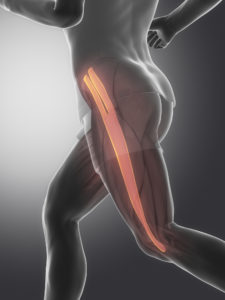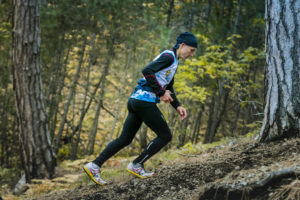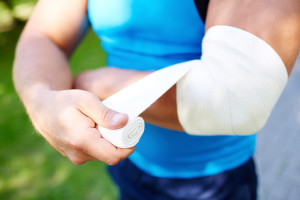Are you constantly battling with tight hamstrings? Been told to stretch them but it doesn’t seem to help? It’s something I see all the time where they come into the clinic complaining of tight hamstrings and I get the same story, that they are stretching regularly but it doesn’t make any difference. Continue reading “Tight Hamstrings? Have you been told to keep stretching?”
The 5 best races for runners in Scotland
With such a wide range of amazing scenery on display Scotland is a great place for running be the events on the road or off road. There are races the cover everything from the flat expanses of East Lothian to highest peak that Scotland has to offer and everything in-between.
So suffice to say whatever type of race takes your fancy you are likely to be able to find it somewhere in the country.
Capacity and Performance: How much can you do before it hurts? An example
Last week I discussed how where possible we want to keep your desired activities in your routine. This might be running, squatting, cycling this part doesn’t really matter rather it is the concept of making your rehab as relevant as possible.
Last October I was looking for a way to incorporate more movement/exercise into my week. I would generally run twice a week and lift twice so I was looking for an easy movement session and decided on GMB’s Elements program. This is a basic movement program that I felt I could do on the days I was looking after my wee boy when he went for a nap. Continue reading “Capacity and Performance: How much can you do before it hurts? An example”
Capacity and performance: how much can you do before it hurts?
Knowing what you can and cannot do is the crux of any rehab program and pushing the envelop of this is where changes occur and, ultimately, you get back to doing the things you enjoy.
We can run tests until the cows come home but the bottom line is what can you actually do before things begin to hurt. We may be test you in a number of different exercises for our subjective and objective tests in the clinic but these really only give us a guide as to what you are capable of.
Continue reading “Capacity and performance: how much can you do before it hurts?”
Illiotibial band syndrome; What’s the cause and what to do about it
Illiotibial band syndrome often seems like a plague for runners. Everyone knows someone who has it or has had it themselves but it is much misunderstood as to what and where it is.
The illiotibial band is a thick, fibrous length of connective tissue that runs from the illiac crest to the lateral condyle of the tibia. It crosses both the hip and the knee joints and plays a role in the stabilisation of both of them. As well as aiding the stabilisation of the knee and hip it is involved in the abduction and extension of the the hip through the attachment of Glute Max and Tensor Fascia Lata.
Continue reading “Illiotibial band syndrome; What’s the cause and what to do about it”
Achilles tendinopathy – what can you do to keep running
Achilles tendinopathy is one of the more common running injuries and I mentioned it previously in post TOP 5 RUNNING INJURIES. As I mentioned there it is pretty much an overuse injury that can be avoided, for the most part though not always, by good programming. If you gradually increase your training load it is possible to avoid overuse injuries as you are training within your capacity to recover before the next training session. In doing this once you get to the tough part of the program the hard training in itself has a protective mechanism, as described by Tim Gabbett here.
Continue reading “Achilles tendinopathy – what can you do to keep running”
The best recovery tool in the world.
All the posts and emails that I write are about trying to maintain a healthy, well functioning body, why it’s important to look after your body, and what to do when you’re sick of putting up with back pain, knee pain, shoulder pain, etc, etc… So you can do all the things you love…
When it comes to your health, there is one, very simple thing that you can do that will lead to the mythical instant results – and that is get more sleep. Continue reading “The best recovery tool in the world.”
The 5 most common running injuries
What are the 5 most common running injuries? Running is such an easy form of exercise to get into and a fundamental requirement for a huge range of sports that it is no surprise that a huge number of people run as part of their fitness regime. Running injuries are very common with a figure of around 70% of those who run getting an injury of some sort every year. This isn’t because running is particularly risky rather it’s more that it’s very easy just to stick your trainers on and get cracking.
As a result of the very easy access to using running as a means of getting fit etc people tend to do it without much thought as to what they are doing. When I say this I am talking about how much they are doing in terms of either volume, intensity of effort and also in terms of the skill of running.
Whilst I would agree that we are all born to run not all of us are going to run well straight away and we tend to forget it is actually quite a demanding activity. Training load, the volume and intensity bit above, is generally the biggest factor in the causes of injury whilst the actual skill sits about 3rd but its importance increases as you get better at it and look to make more demands of yourself, the better your form the more likely you are to distribute the stress over the correct areas.
So what are the most common running injuries?
When have I injured myself and when is it the brain being careful?
What aspect of pain comes from actual tissue damage and what comes from my brain being careful?
This was a question from one of our Facebook followers. It’s a pretty big topic to say the least. What we experience as pain is an output from our brain in relation to the input it receives from the tissues of the body and our experiences such as previous injury to ourselves or others we know, what we read about it or see on TV, what else is happening in our lives at the time. Interestingly the International Association for the Study of Pain describes pain itself as an experience. Continue reading “When have I injured myself and when is it the brain being careful?”
Where does the use of tape and other modalities fit into treatment and injury prevention?
One of our Facebook followers asked this question last week. It is a pretty simple answer in some respects and might surprise you. They are mostly of limited value and come way down the line in terms of providing benefit in either the rehab phase or in helping injury prevention.





